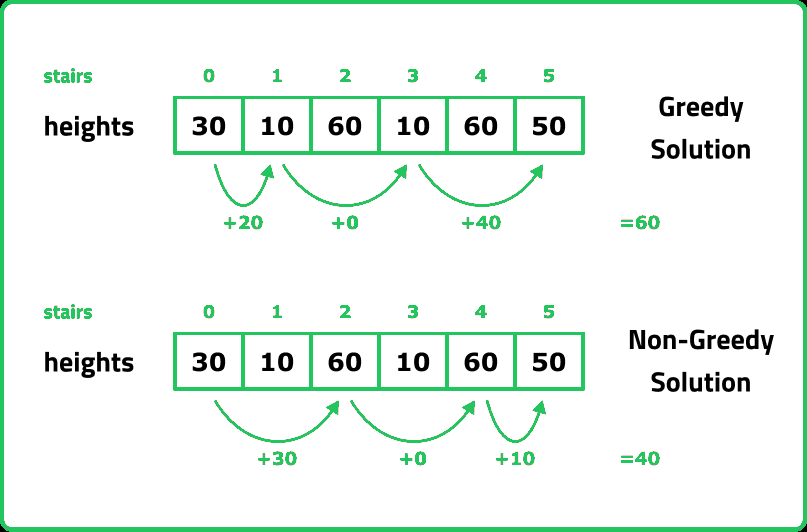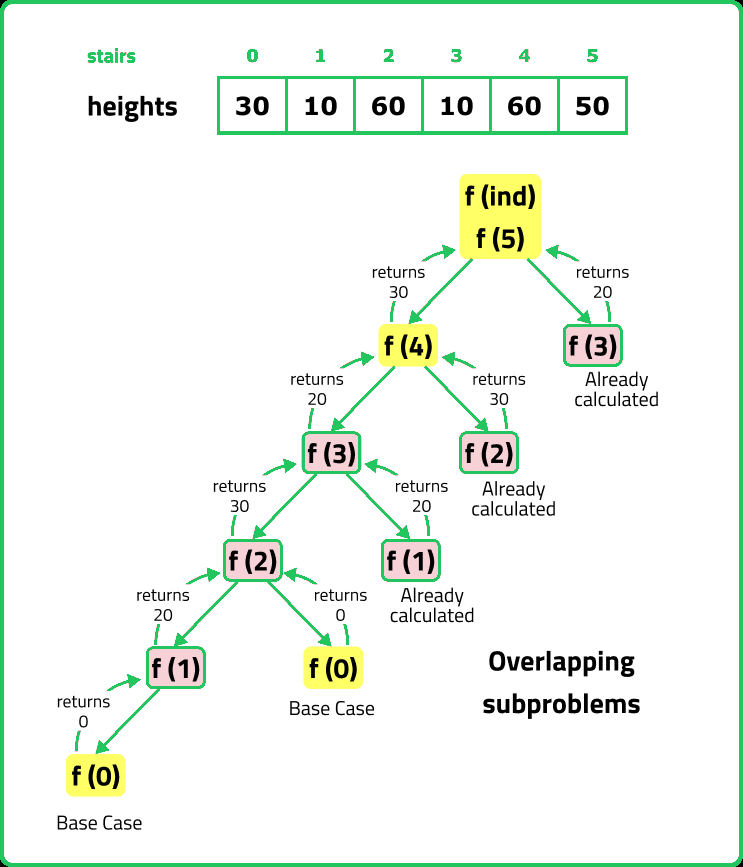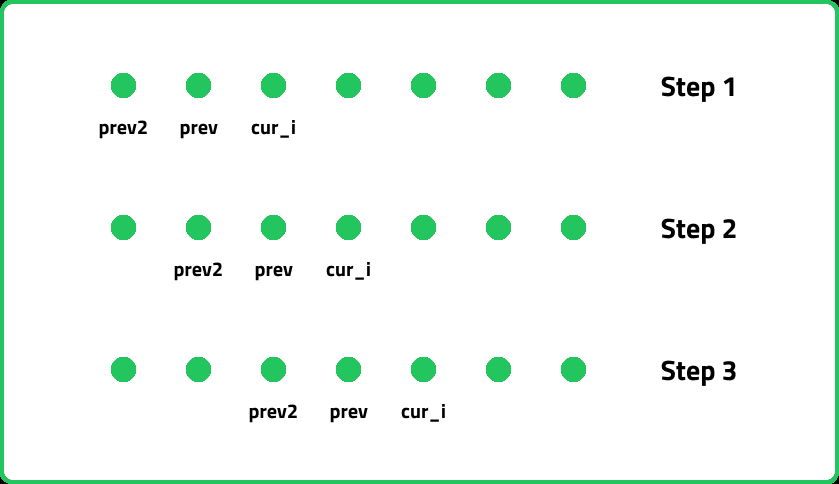1234567891011121314151617181920212223242526272829303132333435
#include<bits/stdc++.h>
using namespace std;
class Solution {
public:
int solve(int ind, vector<int>& heights, vector<int>& dp) {
// Base case
if (ind == 0) return 0;
// Memoized result
if (dp[ind] != -1) return dp[ind];
int jumpOne = solve(ind - 1, heights, dp) + abs(heights[ind] - heights[ind - 1]);
int jumpTwo = INT_MAX;
if (ind > 1)
jumpTwo = solve(ind - 2, heights, dp) + abs(heights[ind] - heights[ind - 2]);
// Store and return result
return dp[ind] = min(jumpOne, jumpTwo);
}
int frogJump(vector<int>& heights) {
int n = heights.size();
vector<int> dp(n, -1);
// Start solving from the last stair
return solve(n - 1, heights, dp);
}
};
int main() {
vector<int> heights = {30, 10, 60, 10, 60, 50};
Solution sol;
// Output the result
cout << sol.frogJump(heights) << endl;
return 0;
}
123456789101112131415161718192021222324252627282930313233
import java.util.Arrays;
class Solution {
private int solve(int ind, int[] heights, int[] dp) {
// Base case
if (ind == 0) return 0;
// Memoized result
if (dp[ind] != -1) return dp[ind];
int jumpOne = solve(ind - 1, heights, dp) + Math.abs(heights[ind] - heights[ind - 1]);
int jumpTwo = Integer.MAX_VALUE;
if (ind > 1)
jumpTwo = solve(ind - 2, heights, dp) + Math.abs(heights[ind] - heights[ind - 2]);
// Store and return result
return dp[ind] = Math.min(jumpOne, jumpTwo);
}
public int frogJump(int[] heights) {
int n = heights.length;
int[] dp = new int[n];
Arrays.fill(dp, -1);
// Start solving from the last stair
return solve(n - 1, heights, dp);
}
public static void main(String[] args) {
int[] heights = {30, 10, 60, 10, 60, 50};
Solution sol = new Solution();
// Output the result
System.out.println(sol.frogJump(heights));
}
}
12345678910111213141516171819202122232425262728293031
class Solution:
def solve(self, ind, heights, dp):
if ind == 0:
# Base case
return 0
if dp[ind] != -1:
# Memoized result
return dp[ind]
jumpOne = self.solve(ind - 1, heights, dp) + abs(heights[ind] - heights[ind - 1])
jumpTwo = float('inf')
if ind > 1:
jumpTwo = self.solve(ind - 2, heights, dp) + abs(heights[ind] - heights[ind - 2])
# Store and return result
dp[ind] = min(jumpOne, jumpTwo)
return dp[ind]
def frogJump(self, heights):
n = len(heights)
dp = [-1] * n
# Start solving from the last stair
return self.solve(n - 1, heights, dp)
# Testing the solution
if __name__ == "__main__":
heights = [30, 10, 60, 10, 60, 50]
sol = Solution()
# Output the result
print(sol.frogJump(heights))
12345678910111213141516171819202122232425262728293031
class Solution {
solve(ind, heights, dp) {
// Base case
if (ind === 0) return 0;
// Memoized result
if (dp[ind] !== -1) return dp[ind];
const jumpOne = this.solve(ind - 1, heights, dp) + Math.abs(heights[ind] - heights[ind - 1]);
let jumpTwo = Infinity;
if (ind > 1)
jumpTwo = this.solve(ind - 2, heights, dp) + Math.abs(heights[ind] - heights[ind - 2]);
// Store and return result
dp[ind] = Math.min(jumpOne, jumpTwo);
return dp[ind];
}
frogJump(heights) {
const n = heights.length;
const dp = Array(n).fill(-1);
// Start solving from the last stair
return this.solve(n - 1, heights, dp);
}
}
// Testing the solution
const heights = [30, 10, 60, 10, 60, 50];
const sol = new Solution();
// Output the result
console.log(sol.frogJump(heights));


